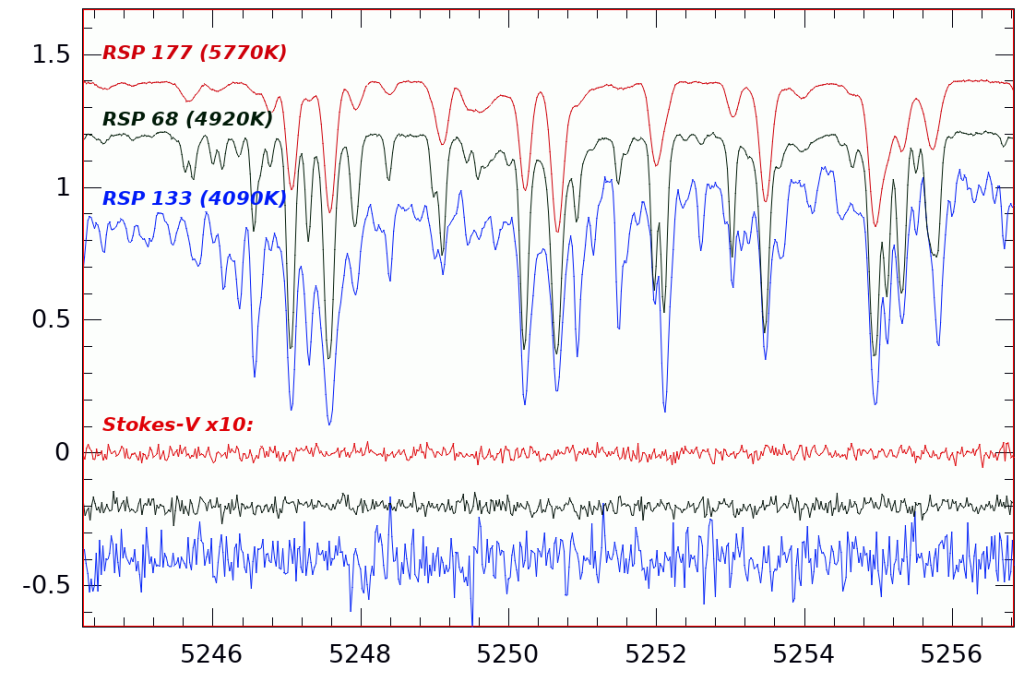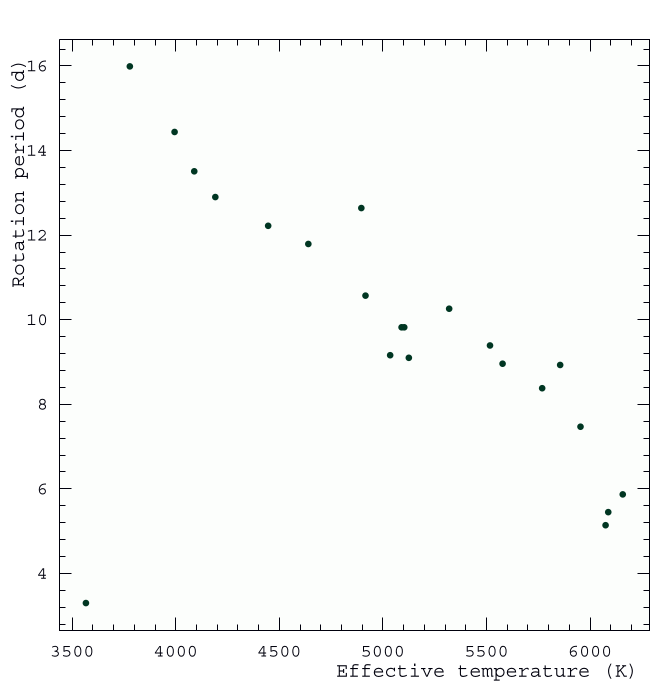Stellar angular momentum loss and its associated spin-down due to magnetic braking are of key interest for understanding the evolution of our Sun in detail and our Solar System in general. For a complete spin-down picture, however, it became obvious with time that the morphology of the surface magnetic field likely plays a dominant but yet unquantified role.
Our primary goal is to provide a consistent empirical basis for stars of equal age and metallicity but different mass in order to better constrain a possible magnetic morphology change with rotation period or Rossby number. Therefore, we chose the Hyades cluster for our target pool. We employ polarimetric observations of Hyades stars with masses between 0.6 and 1.2 solar masses and rotation periods between five and 16 days. Our sample includes thus stars with Rossby numbers in the range 0.1–0.4, while of same age. From this, we hope to learn more about the role of the magnetic field topology for rotational evolution and eventually be able to implement these magnetic topologies, energies, and fluxes as boundary conditions for next-generation global dynamo simulations.
The Figure below shows example spectra for three targets with effective temperatures from ≈4100 K up to solar. The wavelength range in this figure is from CD III and covers three spectral-line pairs with strong Zeeman modulation.

Project Status
Data taking is finished. Analysis currently underway. Observations were carried out through three semesters:
- 2020B: 14 nights POL scheduled. 8 nights successful. 6 nights weathered out. Phase coverage lost for 9 of 16 targets, left 7 targets for ZDI.
- 2021B: 15 nights POL scheduled. 7 nights successful. 8 nights weathered out. First 7 nights closed. Phase coverage lost for all but 3 targets.
- 2022B: 13.5 full- plus 5 half-nights POL scheduled on 19 nights in Nov.-Dec.: 12 full nights successful, 7 nights closed. Recovered lost phase coverages from previous runs and added three new ZDI targets.
The wavelength settings for all observations were with cross disperser (CD) III covering 4800–5441 Å and CD V covering 6278–7419 Å simultaneously. Nineteen of the 21 ZDI targets have additionally one integration with CD VI, covering 7419–9067 Å with the Ca II infrared triplet.
Targets
The total number of Hyads with phase resolution is 22, of which 21 can be used for ZDI. The figure below plots the targets in the P(rot) vs. Teff plane.

